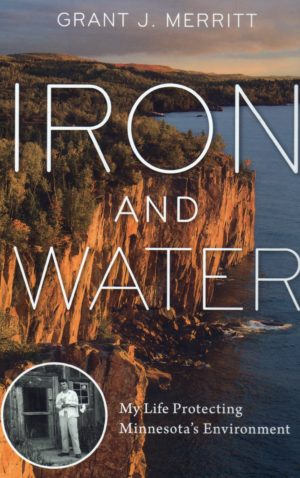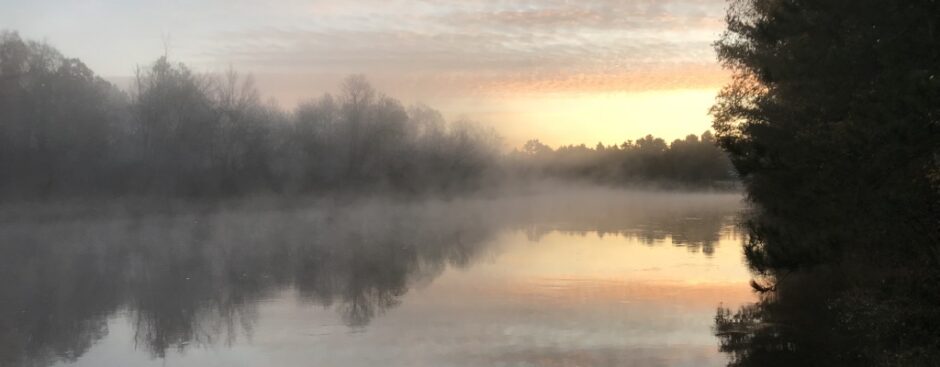
Oh boy. I ask an author to sign two copies of his book, one for me, and one for a friend who worked with that author when they were both in government. I give the one away as a gift. I read the other full of expectation and hope. I end up disappointed. The question then becomes, since I once interviewed the author, the former head of the MPCA (as one of the 23 interviews I conducted when writing Mr. Environment: The Willard Munger Story) and the author is an acquaintance of mine, do I just keep fingers off the keyboard and not write a review? Or do I try to distill what I’ve read and leave it to you, the reader, as to whether or not you want to pick up the book and give it a try? I guess, if I’m going to be honest with myself, it’s the latter. Here goes.
My problems with this attempt at environmental memoir are multiple. First, Iron never settles on a genre. At times a memoir of the author’s early life in Duluth, his career as a litigator, and his legacy as the head of the MPCA (and as an environmental activist), the theme of the story never crystallizes so that the reader understands which genre he or she is reading. While the author renders a brief history of his family (the Merritt Brothers who famously found, then lost, their fortunes on the Mesabi Iron Range) that familial introduction is only a tease. Since this is billed as a memoir (the book’s back cover proclaims such), the lack of depth and personal details regarding the writer’s own life, juxtaposed against the family history, leaves the reader feeling short-changed. This deficiency is further complicated by the last few chapters, when Merritt returns to his own life and regales us with stories from his beloved Isle Royale, the national park where his family still maintains an historic camp. Is this a story about the author’s famous ancestors, the way they were ill-treated by the legal system and lost their fortune, and Merrit’s own life, or it something else? I was never sure.
Additionally, the main gist of the non-memoir portion, a rendering of the Reserve Mining case and other environmental challenges Merritt faced as head of the MPCA and as an activist, lacks the clarity of authorial distance. Why do I say this? To my ear, as I read this portion of the story, one comes away with a belief that the author pretty much took on the challenges of Reserve and issues of water and air pollution, solid waste disposal, recycling, and the founding of state parks with little to no help from others. There is far too much of the “I” in the story and far too little of the “we”. A perfect example, and this might seem like I am evoking familial umbrage on the point (which I am!), of how the author shortchanges the involvement of others in these fights is that, in the 198 pages of this book, the man who authored every single major conservation and environmental bill in the Minnesota House from 1954-1999, Mr. Environment himself (Rep. Willard Munger) is granted one brief appearance in the story (on page 87) which references Willard’s stand against additional nuclear power plants in Minnesota. That’s it? So the 400 plus pages of Willard’s own biography is simply fluff? Yes, I’ll readily admit that I have a personal stake in my uncle’s legacy. So there is that. But when retelling the 1947 battle between Reserve and the United Northern Sportsmen over the taconite plant’s original permit to discharge tailings into Lake Superior, how can one not inform readers that Willard Munger was the president of that organization for at least a portion of that battle? Inexplicable, is my thought. And not letting readers know that Willard, a DFLer who needed union support to continually be re-elected, was the public official most clearly on the firing line when he supported (against union opposition) a container deposit on bottles and cans, is a similar flaw in relating that chapter in Minnesota’s environmental history with accuracy.
My last criticism of the book deals with where this critique started. Is it a memoir? Is it a history of the Reserve case? Or is it, as it seems to devolve after the Reserve story has been told, an environmental policy guide for future generations? I can’t say. The disjointed approach of this slender volume, beginning with family history, unveiling environmental stories and Merritt’s activism in the middle, and then returning to family history and tales of Isle Royale, displays a lack of serious editorial control over the project. I went into this read with great hope that Mr. Merrit would relate his family’s story and his own part in Minnesota’s environmental history in a dramatic, fair, and concise way. I came away disappointed, in part because the tale is told in such a disjointed and non-linear fashion.
3 stars out of 5. The writing isn’t bad; the execution of the story left me scratching my head.
Peace.
Mark


